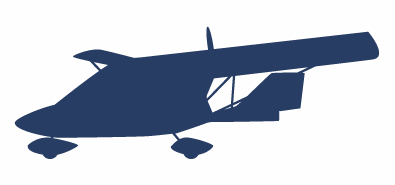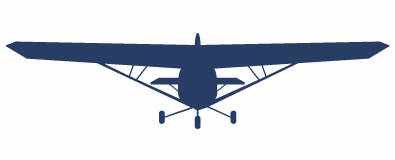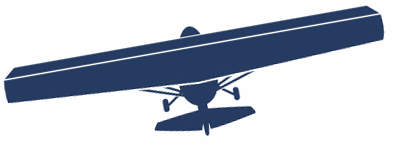 |
|
Any aircraft will be able to perform 3 possible turns around 3 axes that are perpendicular each other whose intersection point is located on the center of gravity of the aircraft. Son of these 3 axes: longitudinal, lateral or vertical axis, and the maneuvers are called pitch, roll and yaw.
The lateral or transverse axis
 The lateral or transverse axis is an imaginary axis that extends from tip to tip of the wings of the plane. The movement that made the aircraft around this axis is called pitch.
The lateral or transverse axis is an imaginary axis that extends from tip to tip of the wings of the plane. The movement that made the aircraft around this axis is called pitch.
The pilot from the cockpit is capable of modifying the orientation with respect to the axis through the elevator.
Pulling the lever backwards (towards the light) there is an elevation of the nose of the airplane, and when pushed forward down the nose of the airplane is produced.
The longitudinal axis
 The longitudinal axis is an imaginary axis that extends from the nose to the tail of the aircraft. The movement that made the aircraft around this axis is called warp.
The longitudinal axis is an imaginary axis that extends from the nose to the tail of the aircraft. The movement that made the aircraft around this axis is called warp.
The warp control surfaces are spoilers. Turning the baton there is differential deflection of the ailerons: while a wing spoiler goes up, the other low-wing spoiler, being the angle of deflection proportional to the degree of rotation of the control horns.
The spoiler which has bent down, produces an increase of bearing capacity on its wing corresponding, causing the rise of the same, while spoiler that is flexed upward, on its wing produces a decrease of bearing capacity, encouraging the descent of the same.
The vertical axis
 The vertical axis is an imaginary axis that is perpendicular to the longitudinal and transverse axes passing through the Centre of gravity of the aircraft. This axis is perpendicular to the axis of nod and of rolling, is contained in a plane that passes through the nose and tail of the appliance and that normally divides this into two symmetrical parts).
The vertical axis is an imaginary axis that is perpendicular to the longitudinal and transverse axes passing through the Centre of gravity of the aircraft. This axis is perpendicular to the axis of nod and of rolling, is contained in a plane that passes through the nose and tail of the appliance and that normally divides this into two symmetrical parts).
The movement that made the aircraft around this axis is called yaw (movement of the aircraft with respect to the vertical imaginary axis that passes through the Centre of gravity of the aircraft). The surface of the yaw is the tail rudder or rudder.
On the rudder is controlled by the pedals. To achieve a movement of yaw to the right, the pilot pressed the right pedal, passing on the rotating surface of the rudder to the derecha.1 this will cause a deflection of the relative wind (due to the speed of the aircraft flight) to this side, which causes a reaction which pushes the plane derives from the plane to the left andbecause it is a rigid structure, the result is a turn of the nose right on the mentioned vertical axis.
The yaw can occur involuntarily in flight or ground. In flight it can be caused by a gust of side wind or aerodynamic irregularities due to the pilot. In extreme cases it can reach the autorotation, causing the Auger. The yaw on earth can be caused, in addition to the cit causes.